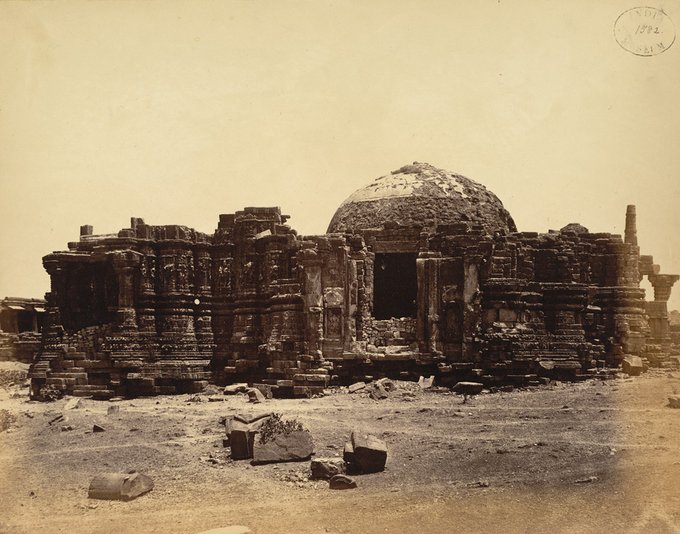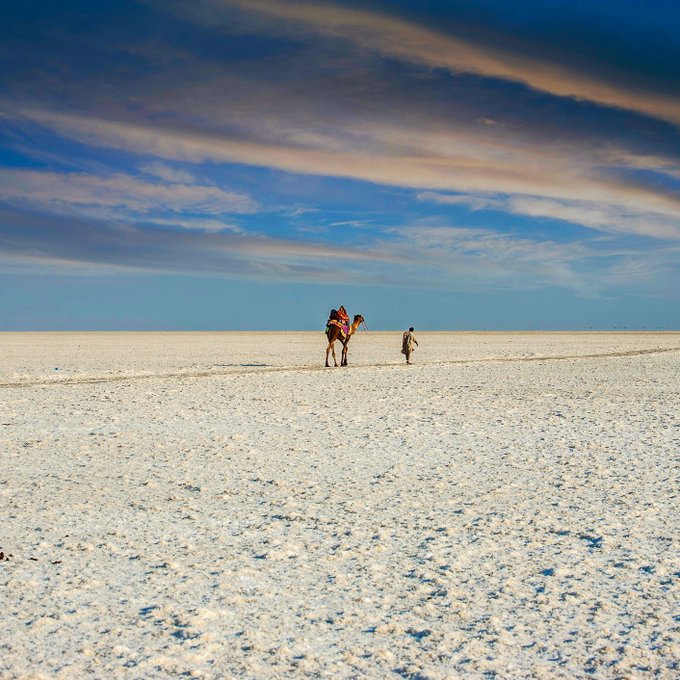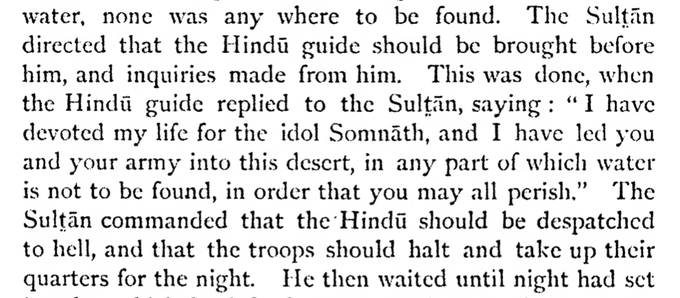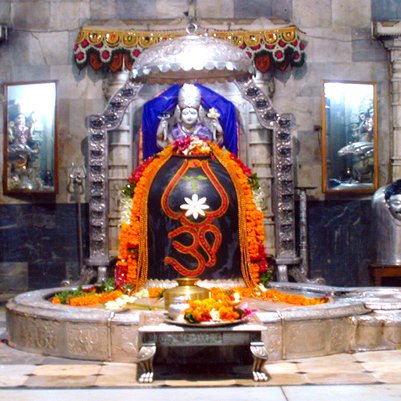During the Islamic invasions, there were countless, nameless Hindus who put their lives at stake to defend our temples and deities.
In 1025 CE, the savage Mahmud Ghazni raided Gujarat, plundering the Somnath temple and devastating many sacred icons and temples.
The Tabakat-I-Nasiri by Minkaj-i-Siraj describes the earliest Islamic raids of Ghazni in detail including his attacks on Somnath. The book narrates a brief but fascinating account of a brave, unknown Hindu who played a role in the story.

Mahmud plundered immense booty worth 2 million dinars from Somnath and broke the Jyotirlinga into 4 pieces. The 1st piece to be buried under the masjid at Ghazni, the 2nd for the gateway of Mahmud’s palace and 3rd & 4th sent to Makkah and Madinah.

While returning from Somnath, Mahmud had to travel through the desert of the Great Rann of Kutchh to reach Sindh quickly. His army needed a local guide to take them through the dangerous terrain. One day, a young Hindu man showed up volunteering to be the guide.

Triumphant with his destruction of Hindu temples and flushed with the blood of massacring thousands of Kafirs, an elated Mahmud and his army set off with the Hindu guide leading the way. After they had marched all night and day, they decided to halt out of exhaustion.

The troops began the search for fresh water with the guide but could not find any even after several hours of looking in the scorching heat. Frustrated, Mahmud called the Hindu guide and asked him why hadn’t he found water yet, even after so many hours.

The intense heat and sunlight had parched the throats of Ghazni’s army. Further delay meant certain death. Slowly the Hindu guide bowed in front of the Sultan and lifted his head with a mysterious smile. Mahmud was enraged and asked him what was so funny.
Eyes flashing, the Hindu guide sprang to his feet and shouted out: “I have devoted my life for my God Somnath, and I led you and your army into the most dangerous part of this desert, so that you may never find water and die here as stinking carcasses to be devoured by vultures.”

Mahmud’s blood froze as he trembled with rage and immediately taking a sword to the Hindu’s head immediately beheaded him. His army was forced to wait all night until next morning. They eventually did find water but not before several of Mahmud’s troops perished like flies.
Such nameless, faceless Hindus ensured that they avenged Dharma by sacrificing their very lives to try and stop the devastation of Islamic invasions. Their deeds are never found in history books, but Bhagwan Somnath remembers.

References: Tabaqat-i-Nasiri Book by Minhaj-i Siraj Juzjani. Available online here.
(This article has been compiled from the tweet thread of Savitri Mumukshu @MumukshuSavitri)


The author, like other writers, is using an English translation of a book written by an Islamic author
The veracity of the story is questionable
Ghazni, per our domestic accounts, was not the all conquering hero, as is painted by Islamic and British Christian so called historians
Both abrahamic groups had a goal to defeat Dhramuc Bharat, and that could only be done by wiping out nay pride that Hindus etc had in their heritage
The history was wriiten by them, and sadly Historians of Independent India carried on the narrative
Mahmud of Ghazni was a two bit bandit, over glorified
He made some raids, but was he successful
If he was successfu, there would have been nio need for him to go with his army into teh desert, after successfully conquerung and plundering the hindu/buddhist/ jain population
Our doemstic versions tell us that Ghazni was attached and best by the armies of the Jat khaps/republics , who attacked him at every turn and drove him into the desert, from where he managed to make it abck to Afghanistan, where his loyal bards could cook up a fake narrative glorifying him
Another example is Alexander, who was defated by the jats of Punjab and Sindh, and driven into teh Mkaran desert, eher 90 % of his army perished, and he managed ot get to Basra, in Iraq, where ie died as a sick and broken man,
Mohamne dof Ghori, another great Islamict invader, glorified in our history books, ha shis hed cut off by the Khokkar Jats of the Punjab
These were no nameless hindus
The descendanst of these people still defend Bharat and its civilization today